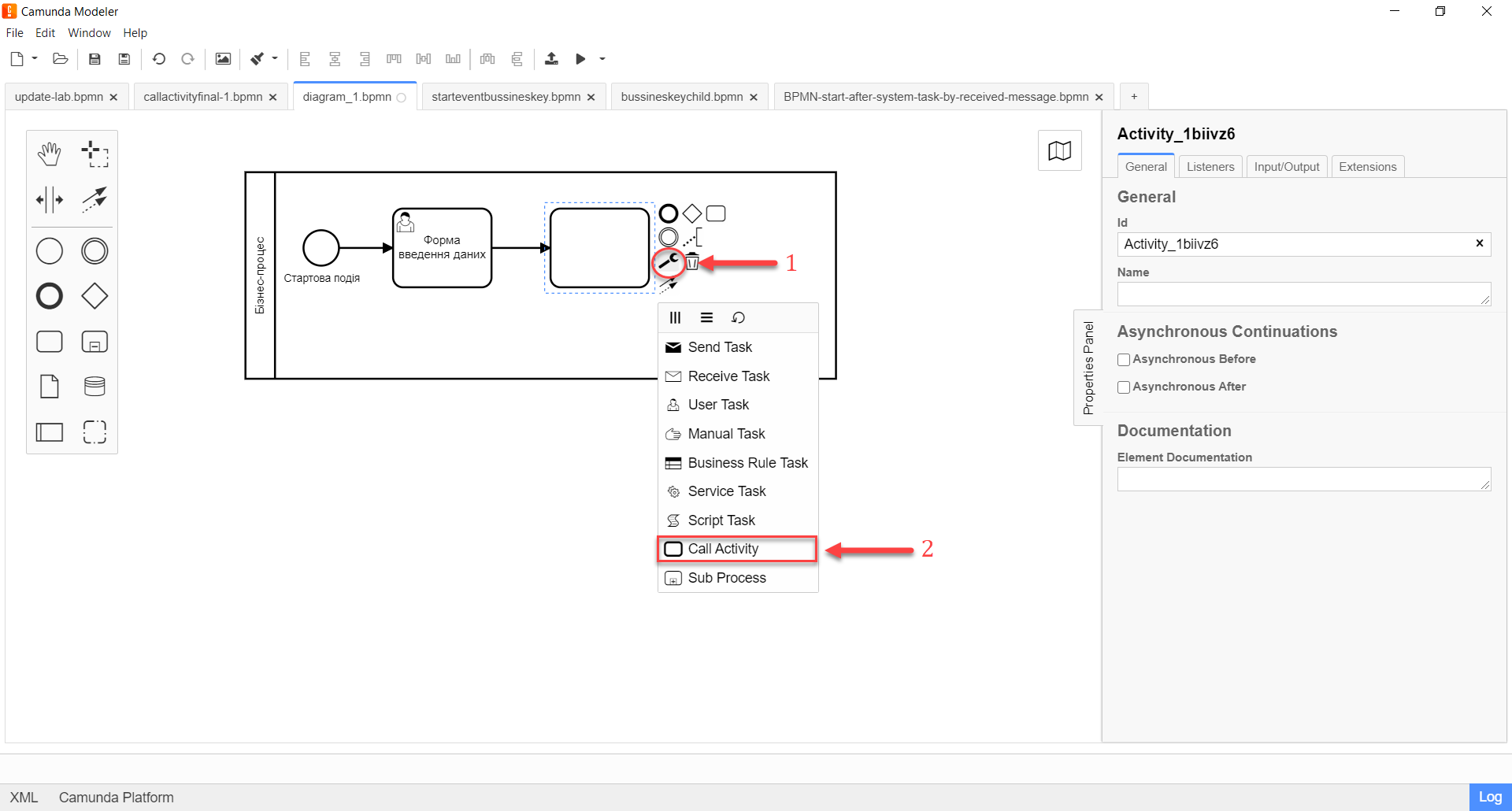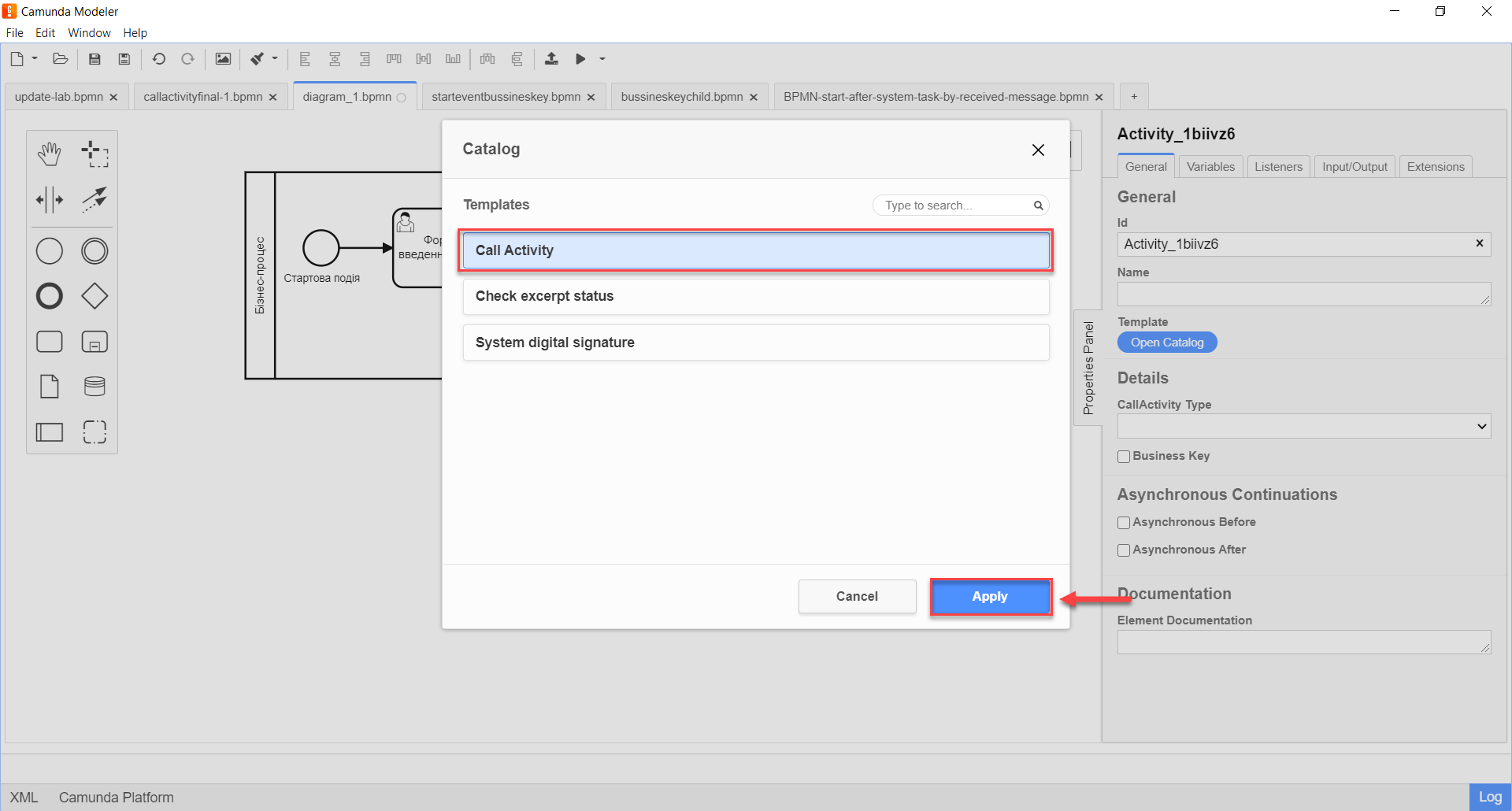Call Activity delegate
| 🌐 This document is available in both English and Ukrainian. Use the language toggle in the top right corner to switch between versions. |
| Name | Description |
|---|---|
The business name of the integration extension |
Call Activity |
The internal name of the integration extension |
|
The file name in the extension library |
callActivity.json |
1. General overview
The Call Activity extension is a general delegate for calling global subprocesses, configurable using the developed template of the same name, Call Activity (callActivity.json). The extension is used when it is necessary to call an external subprocess from a business process.
| Before configuring the template in the Camunda Modeler, make sure that the resources → element-templates folder in the application contains the callActivity.json. file. |
|
There are certain limitations on the number of levels of nesting of business processes when calling external subprocesses using the Call Activity delegate. To ensure proper operation of the functionality of calling external subprocesses using the Call Activity, use no more than 3 levels of nesting of business processes, i.e. the main process, global subprocess level 1, and global subprocess level 2. |
| For more information about the features of using the Call Activity delegate in a business process, please see the following page here. |
2. Configuring the template
-
Create Call Activity.

-
On the settings panel on the right, click the
Open Catalogbutton, select the appropriate Call Activity template from the list, and clickApplyto confirm.

-
Perform further customization as follows:
-
In the
Namefield, enter the name of the task (for example,call-activity-task). -
In the
Called Elementfield, specify the identifier of the external process or subprocess that will be called (for example,called-process). -
In the
Input datafield, specify the input data that needs to be passed to the calling business process. Parameters should be passed in the form of key-value pairs (for example,${payload}). -
In the
Output variable namefield, specify the name of the variable to which the data (payload) obtained as a result of executing the called subprocess should be written (for example,callActivityOutput).If the called subprocess produces some output data, it will write this data to the specified variable. If you need to use the obtained data in the main process, you should refer to the variable where this data is stored. 